Description
The Bowhead whale was named for its distinctive bow-shaped skull, which is enormous—close to 40 percent of total body length can grow up to 20 metres in length. The whale is mainly blue-black in colour, with cream-colour blotches on its lower jaw, white blotches on its belly, and a pale grey area on its tail. Flippers are small and rounded, and the bowhead has no dorsal fin. Females are generally larger than males.
 Bowhead whales are among the most vocal of all the baleen whales. Groups of up to 15 whales, scattered over an area of 10 to 20 square miles probably maintain contact with one another during migration. The whales may also use the reverberations of their calls to help them judge an ice floe’s dimensions.
Bowhead whales are among the most vocal of all the baleen whales. Groups of up to 15 whales, scattered over an area of 10 to 20 square miles probably maintain contact with one another during migration. The whales may also use the reverberations of their calls to help them judge an ice floe’s dimensions.
Bowhead whales are well adapted to arctic conditions. They’re very strong, able to break through thick arctic ice and create breathing holes. The blubber of bowheads can measure up to 45 centimetres in thickness, helping them withstand the extreme arctic cold.
Little is known about how quickly bowheads grow or to what age they live. Recent tests carried out on bowheads from the western Arctic, however, have suggested that some of these whales might live to between 100 and 200 years of age.
 Back to top
Back to top
Range
Bowhead whales are found in arctic and sub-arctic waters from Wrangell Island, Siberia, to Spitzbergen. In Canada, bowhead whales are found in both the western and eastern Arctic. The Eastern Arctic population ranges from northern Baffin Bay to northwestern Hudson Bay; and from Prince Regent Inlet to West Greenland, at different times of the year. The western population is found during the summer months in the Beaufort Sea and Arctic Ocean. Between fall and spring, Bowheads migrate in and out of Canadian waters along the northern coastline of Alaska.
One of the few whales to live so far north, bowheads migrate north and south as the ice retreats and expands. The whales prefer bays, straits and estuaries, and are seldom found far from ice floes.
 Back to top
Back to top
Feeding
Bowheads feed almost entirely on small invertebrate animals—including copepods and euphausiids—that occur in dense swarms. As with other baleen whales, such as the humpback, the bowhead has no teeth; instead it has a series of fringed plates—called baleen plates—hanging from each side of its upper jaw. The bowhead has the longest baleen of any living whale—up to four metres. During feeding, a bowhead swims slowly along with its mouth open. When the whale closes its mouth, the water is forced out and the baleen plates act as filters, trapping food on the inside ready to be swallowed.
 Back to top
Back to top
Conservation
 The eastern Arctic population of bowhead whales was seriously depleted by excessive commercial whaling. Canada banned large-scale commercial whaling of the bowhead in 1915, and the whale was designated ‘endangered’ by the Committee on the Status of Endangered Wildlife in Canada (COSEWIC) in the early 1980s. The total population of eastern Arctic bowhead whales in 1991 was thought to number less than 1,000. About 350 whales were thought to remain in the Baffin Island area—a huge drop from the 11,000 of the early 1800s. Recent Inuit knowledge and aerial surveys suggest that the population is increasing in size. There is a small, carefully managed survival hunt which does not pose a risk to the population. The current population of the western Arctic population is estimated to number approximately 11,000.Greater volumes of marine vessel traffic could lead to collisions with boats. Noise pollution has also been found to frighten whales away from potential feeding grounds. Noise pollution has been found to frighten western Arctic whales away from potential feeding grounds.
The eastern Arctic population of bowhead whales was seriously depleted by excessive commercial whaling. Canada banned large-scale commercial whaling of the bowhead in 1915, and the whale was designated ‘endangered’ by the Committee on the Status of Endangered Wildlife in Canada (COSEWIC) in the early 1980s. The total population of eastern Arctic bowhead whales in 1991 was thought to number less than 1,000. About 350 whales were thought to remain in the Baffin Island area—a huge drop from the 11,000 of the early 1800s. Recent Inuit knowledge and aerial surveys suggest that the population is increasing in size. There is a small, carefully managed survival hunt which does not pose a risk to the population. The current population of the western Arctic population is estimated to number approximately 11,000.Greater volumes of marine vessel traffic could lead to collisions with boats. Noise pollution has also been found to frighten whales away from potential feeding grounds. Noise pollution has been found to frighten western Arctic whales away from potential feeding grounds.
Designated as ‘at risk’ by COSEWIC prior to October 1999, the western and eastern bowhead whale populations must be reassessed against revised criteria before it can be considered for addition to Schedule 1 of the Species at Risk Act (SARA). However, the whale is protected under a number of other Acts, regulations and agreements. The whale is also protected under the U.S. Endangered Species Act. Internationally, the International Whaling Commission (IWC) regulates hunting of Bowhead whales.
A conservation strategy has been developed for eastern Arctic Bowheads, in close cooperation with the Nunavut Wildlife Management Board (NWMB) and the World Wildlife Fund (WWF). Implementation is underway. The strategy sets out priority activities to ensure the long-term survival of the whale.
Find out more ».
Recovery efforts are focused on eastern Arctic populations, through ongoing monitoring of numbers, identification of calf-rearing habitat, and determination of population structure. With the active involvement of Inuit communities in the north, work is also progressing to protect habitat used by bowhead whales in Isabella Bay, Baffin Island and Nunavut.
What can you do?
Bowhead whales will get the protection they need only if all Canadians work together to reduce threats. Find out more about bowhead whales and be aware of human-induced threats such as net entanglement and collision with marine vessels. Do your best to reduce these threats wherever possible.
 Back to top
Back to top
Resources
Online Resources
Text:
Department of Fisheries and Oceans Canada with background information provided by Environment Canada in March. 2004.
Photos:
Department of Fisheries and Oceans Canada












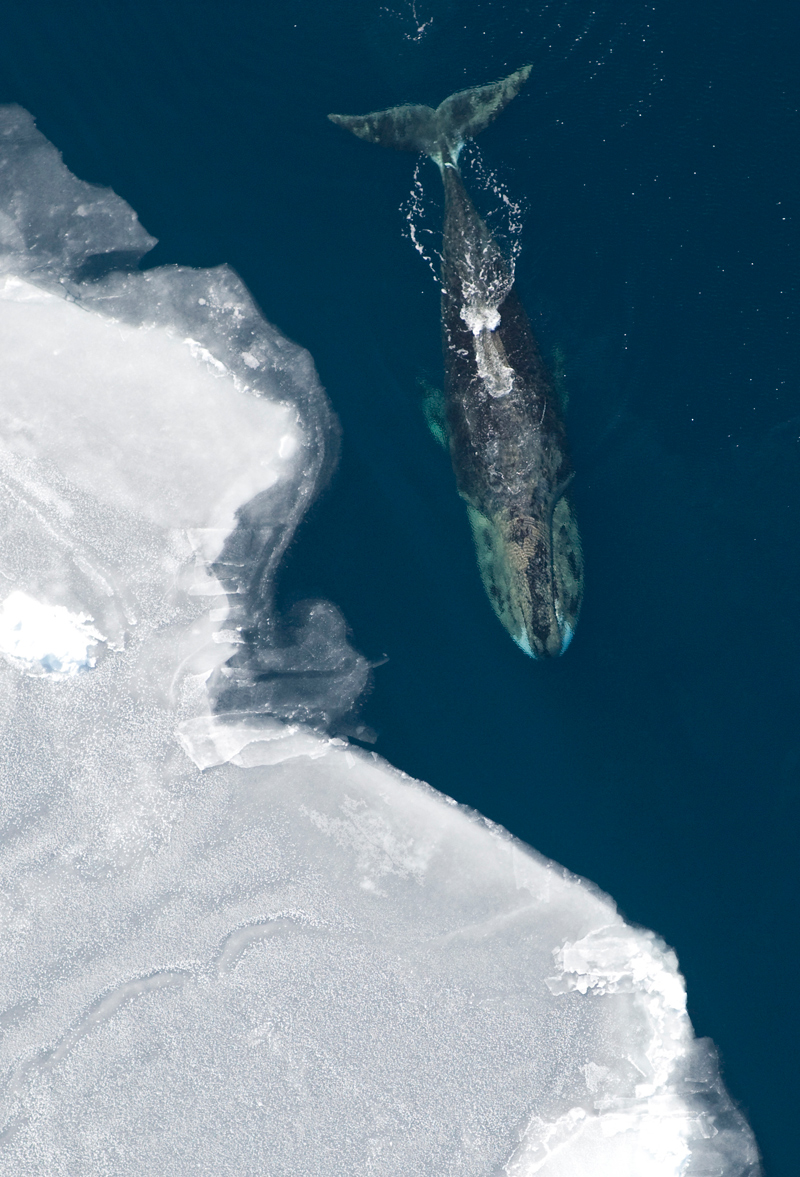

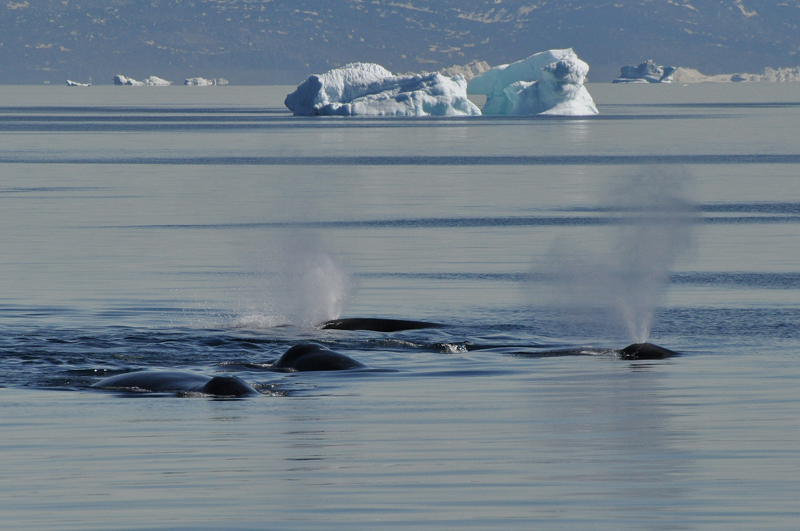







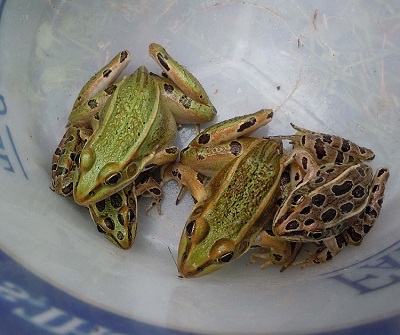




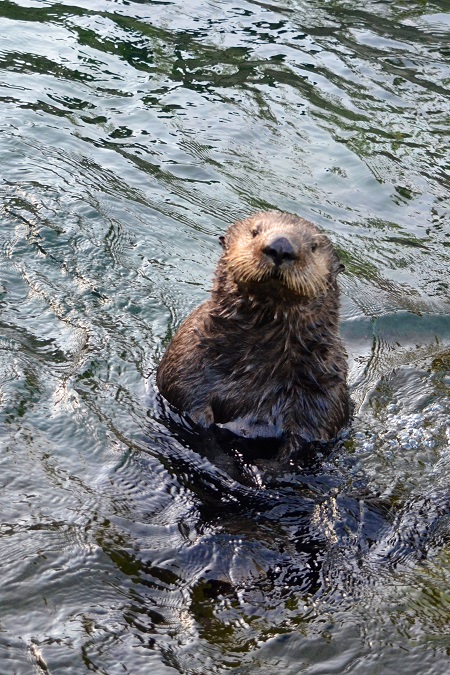

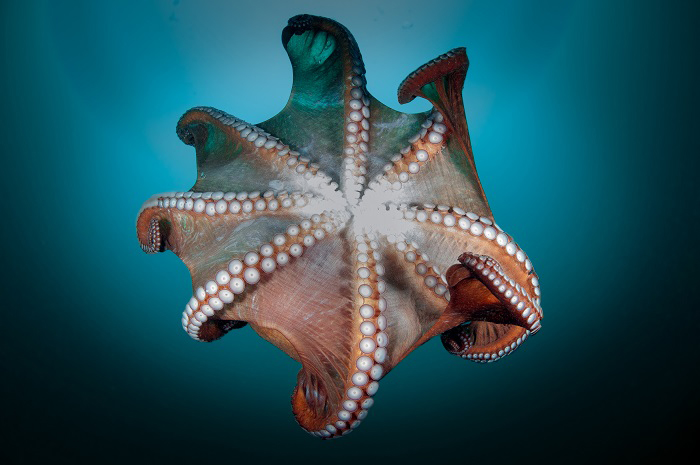





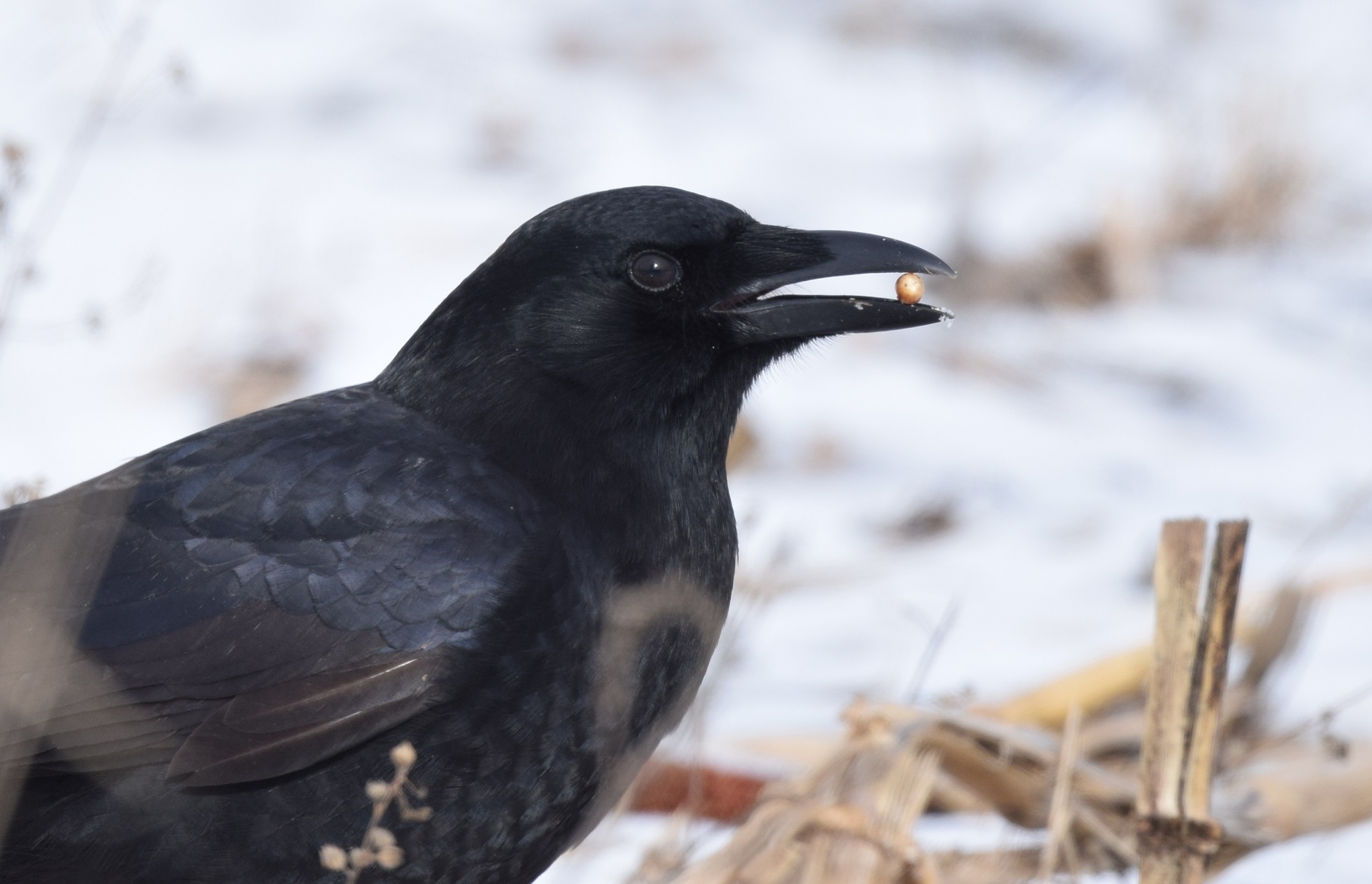


 The Atlantic Cod (Gadus morhua) is a medium to large saltwater fish: generally averaging two to three kilograms in weight and about 65 to 100 centimetres in length, the largest cod on record weighed about 100 kg and was more than 180 cm long! Individuals living closer to shore tend to be smaller than their offshore relatives, but male and female cod are not different in size, wherever they live.
The Atlantic Cod (Gadus morhua) is a medium to large saltwater fish: generally averaging two to three kilograms in weight and about 65 to 100 centimetres in length, the largest cod on record weighed about 100 kg and was more than 180 cm long! Individuals living closer to shore tend to be smaller than their offshore relatives, but male and female cod are not different in size, wherever they live.
 The North Atlantic Right Whale (Eubalæna glacialis) is one of the rarest of the large whales. It can weigh up to 63,500 kilograms and measure up to 16 metres. That’s the length of a transport truck and twice the weight! Females tend to be a bit larger than males – measuring, on average, one metre longer. Considering its weight, it’s fairly short, giving it a stocky, rotund appearance. Its head makes up about a fourth of its body length, and its mouth is characterized by its arched, or highly curved, jaw. The Right Whale’s head is partially covered in what is called callosities (black or grey raised patches of roughened skin) on its upper and lower jaws, and around its eyes and blowhole. These callosities can appear white or cream as small cyamid crustaceans, called “whale lice”, attach themselves to them. Its skin is otherwise smooth and black, but some individuals have white patches on their bellies and chin. Under the whale’s skin, a blubber layer of sometimes more than 30 centimetres thick helps it to stay warm in the cold water and store energy. It has large, triangular flippers, or pectoral fins. Its tail, also called flukes or caudal fins, is broad (six m wide from tip to tip!), smooth and black. That’s almost the same size as the Blue Whale’s tail, even though Right Whales are just over half their size. Unlike most other large whales, it has no dorsal fin.
The North Atlantic Right Whale (Eubalæna glacialis) is one of the rarest of the large whales. It can weigh up to 63,500 kilograms and measure up to 16 metres. That’s the length of a transport truck and twice the weight! Females tend to be a bit larger than males – measuring, on average, one metre longer. Considering its weight, it’s fairly short, giving it a stocky, rotund appearance. Its head makes up about a fourth of its body length, and its mouth is characterized by its arched, or highly curved, jaw. The Right Whale’s head is partially covered in what is called callosities (black or grey raised patches of roughened skin) on its upper and lower jaws, and around its eyes and blowhole. These callosities can appear white or cream as small cyamid crustaceans, called “whale lice”, attach themselves to them. Its skin is otherwise smooth and black, but some individuals have white patches on their bellies and chin. Under the whale’s skin, a blubber layer of sometimes more than 30 centimetres thick helps it to stay warm in the cold water and store energy. It has large, triangular flippers, or pectoral fins. Its tail, also called flukes or caudal fins, is broad (six m wide from tip to tip!), smooth and black. That’s almost the same size as the Blue Whale’s tail, even though Right Whales are just over half their size. Unlike most other large whales, it has no dorsal fin.
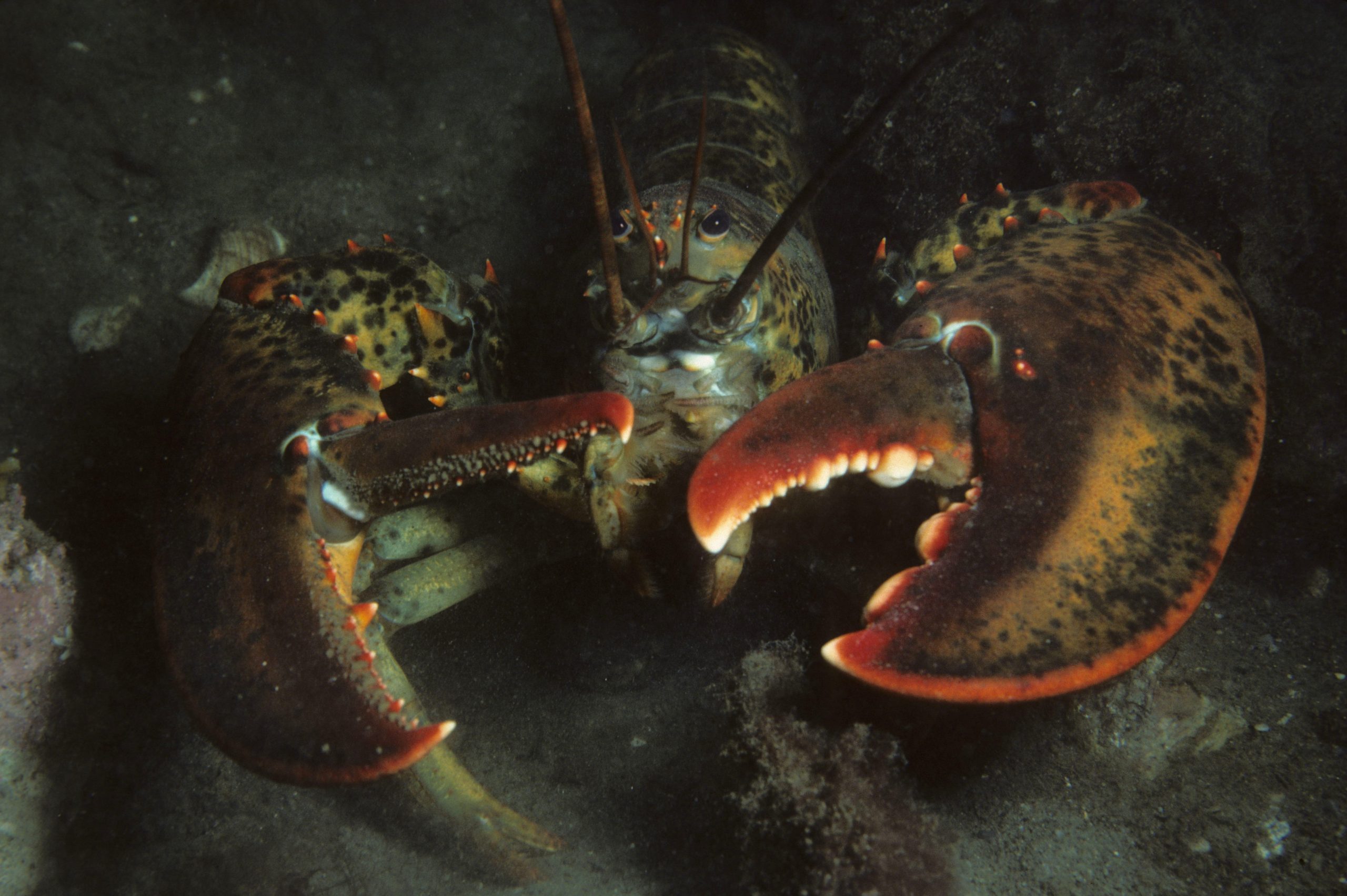















 Adult Trumpeter Swans Cygnus buccinator are large birds with white feathers and black legs and feet. The feathers of the head and the upper part of the neck often become stained orange as a result of feeding in areas rich in iron salts. The lack of colour anywhere on the swans’ bodies distinguishes them from other white species of waterfowl, such as snow geese, which have black wing tips.
Adult Trumpeter Swans Cygnus buccinator are large birds with white feathers and black legs and feet. The feathers of the head and the upper part of the neck often become stained orange as a result of feeding in areas rich in iron salts. The lack of colour anywhere on the swans’ bodies distinguishes them from other white species of waterfowl, such as snow geese, which have black wing tips.